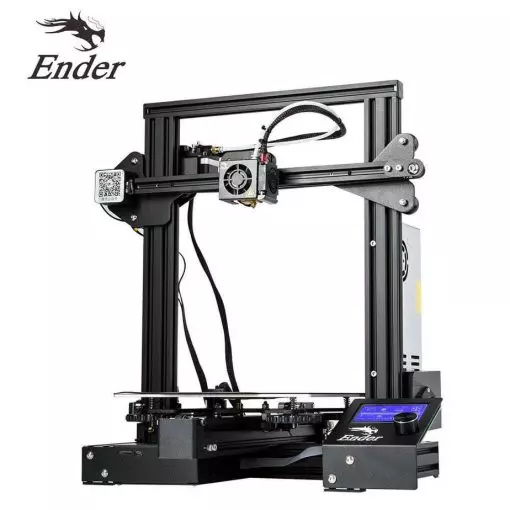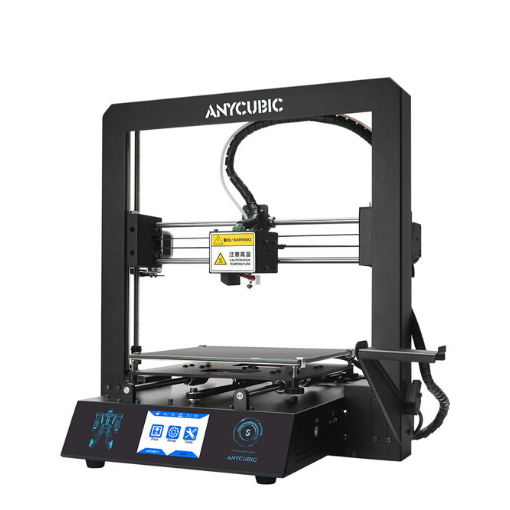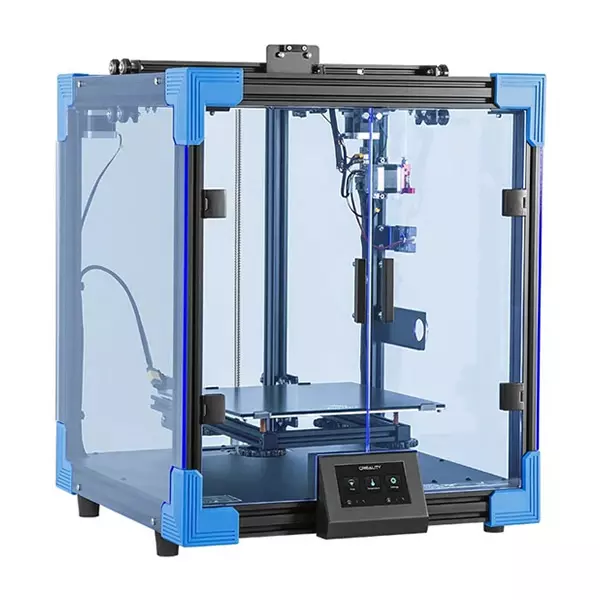Compare Ender 3 vs Mega S vs Ender 6
Comparison between the best 3D printers
Choose the best 3D printer at the best price. The cheapest 3D printers are here.
Buy a 3D printer here with 3D Fila.
 |
 |
 |
|
| Model | Ender 3[BUY Ender 3] |
Mega S |
Ender 6[BUY Ender 6] |
| Printing Material | Filament | Filament | Filament |
| Estimated price | $210,00 | $149,00 | $499,00 |
| Fabricante | Creality 3D | Anycubic | Creality 3D |
| Release Year | 2018 | 2019 | 2020 |
| Print Volume [mm] | 220x220x250 | 210x210x205 | 250x250x400 |
| Printer Size [mm] | 440x440x465 | 405x410x452 | 495x495x650 |
| Weight [kg] | 6,62 | 14,5 | 22 |
| Power Loss Recovery | NO | YES | YES |
| Enclosed printer | NO | NO | NO |
| Bed Leveling | Manual | Manual | Manual |
| Filament End Sensor | NO | YES | YES |
| Bed type | Heated | Heated | Heated |
| Power supply system | Bowden | Bowden | Bowden |
| Standard nozzle | 0,4 | 0,4 | 0,4 |
| Maximum Nozzle Temperature [°C] | 255 | 260 | 260 |
| Maximum Bed Temperature [°C] | 110 | 110 | 100 |
| Maximum printing speed [mm/s] | 180 | 100 | 150 |
| Filament holder | YES | YES | YES |
| Camera for supervision | NO | NO | NO |
| Recommended filaments | PLA, TPU, ABS, PETG | PLA, TPU, ABS, PETG | PLA, TPU, ABS, PETG |
| Recommended slicers | Cura, Simplify, Slic3r | Cura, Simplify, Slic3r | Cura, Simplify, Slic3r |
| Maximum Resolution [mm] | 0,1 | 0,1 | 0,1 |
| Processor | 8 bits | 8 bits | 32 bits |
| Display | Mono | Touchscreen TFT 2,8'' | Touchscreen TFT 4,3'' |
| Power Supply | 24V / 270W | 12V / 300W | 24V / 504W |
| Connectivity | SD / USB | SD / USB | SD / USB |
| Operating systems | Windows, Mac, Linux | Windows, Mac, Linux | Windows, Mac, Linux |
| Date of registration in the system | 2021-04-13 | 2021-04-15 | 2021-04-15 |
| Release date | 2018 | 2019 | 2020 |
| Extra features | The Ender 3 V1 is a DIY assembly 3D printer, a sales leader since 2017, standing out for its cost-benefit. With a wide printing capacity, it has a CNC machined structure for precision and stability. It offers high-precision prints with low noise, thanks to its innovative V-profile and pulleys. It has a self-adhesive magnetic platform for easy removal of models and excellent adhesion. The Ender 3 heats up quickly, reaching 100°C in 5 minutes, ideal for agile prints. It includes protection against power failures, allowing you to resume printing after interruptions, saving time and material. | The Anycubic Mega S offers a printing platform with excellent adhesion, easy removal after cooling. It has a filament sensor for a better experience with flexible materials and a multilingual and intuitive color touchscreen. Assembly is quick, requiring only 8 screws and 3 connections. It has a large build volume (210 x 210 x 205 mm), high positioning accuracy and supports a variety of materials, including TPU, PLA, ABS and wood. It stands out for its solid metal structure, superior stability, high-quality printing with layer resolution of up to 50 microns, Ultrabase for easy adhesion and removal of parts, resumption of printing after power outage, high-quality extruder for flexible filaments, suspended filament support and stable structure that reduces shaking, improving printing quality. | The Creality Ender 6 stands out in the world of 3D printers with its CoreXY system, offering fast and high-quality prints. With a robust design, it has acrylic panels to protect against air currents, optimizing the printing of materials that require higher temperatures. It features a generic Creality hotend, effective up to ~240°C. Its differentials include 10mm GATES belts, promoting stability at high speeds, and a 360W power supply for reliable performance. The machine also has an intuitive user interface through a 4.3-inch touchscreen. |
| Support for multiple colors and materials (AMS and CFS) | NO | NO | NO |
Notes * |
|||
| Cost-benefit | 6 / 10 | 7 / 10 | 7 / 10 |
| Hardware | 0.5 / 10 | 2 / 10 | 2.5 / 10 |
| Screen | . | . | . |
| Print volume | 3 / 10 | 3 / 10 | 4 / 10 |
| Performance | 1 / 10 | 1 / 10 | 1 / 10 |
| [BUY Ender 3] | [BUY Ender 6] |
Conclusion |
| In summary, when comparing the three 3D printers—Ender 3, Anycubic Mega S, and Ender 6—each offers distinct advantages tailored to different user needs and budgets. The **Ender 3**, while being the most affordable option, presents excellent cost-value ratios for beginners. It’s recognized for its reliable performance, decent build volume, and a user-friendly approach, although it lacks advanced features like power loss recovery and filament sensors. Its sturdy design and ability to produce quality prints make it a popular choice among hobbyists. The **Anycubic Mega S** stands out with its larger build volume and advanced features such as a filament sensor and better thermal stability, making it particularly well-suited for those who frequently work with flexible materials. Its touchscreen interface adds a layer of convenience. However, it is slightly more expensive and heavier than the Ender 3, which could be limiting for those with constrained setups. The **Ender 6**, being the most expensive of the three, is designed for users who prioritize speed and high-quality prints. Its advanced CoreXY motion system and larger print volume cater to more serious projects. Features like power loss recovery and a more powerful controller contribute to a smoother printing experience. However, this printer is best suited for users who can justify the price with more intensive printing needs. Ultimately, the choice of printer depends on your individual requirements, budget, and intended use. For budget-conscious beginners, the Ender 3 remains an excellent entry-level printer. Those looking for a more versatile and feature-rich option would find the Anycubic Mega S a solid choice. Meanwhile, advanced users or those who need professional-grade performance should consider investing in the Ender 6 for its superior capabilities. |

